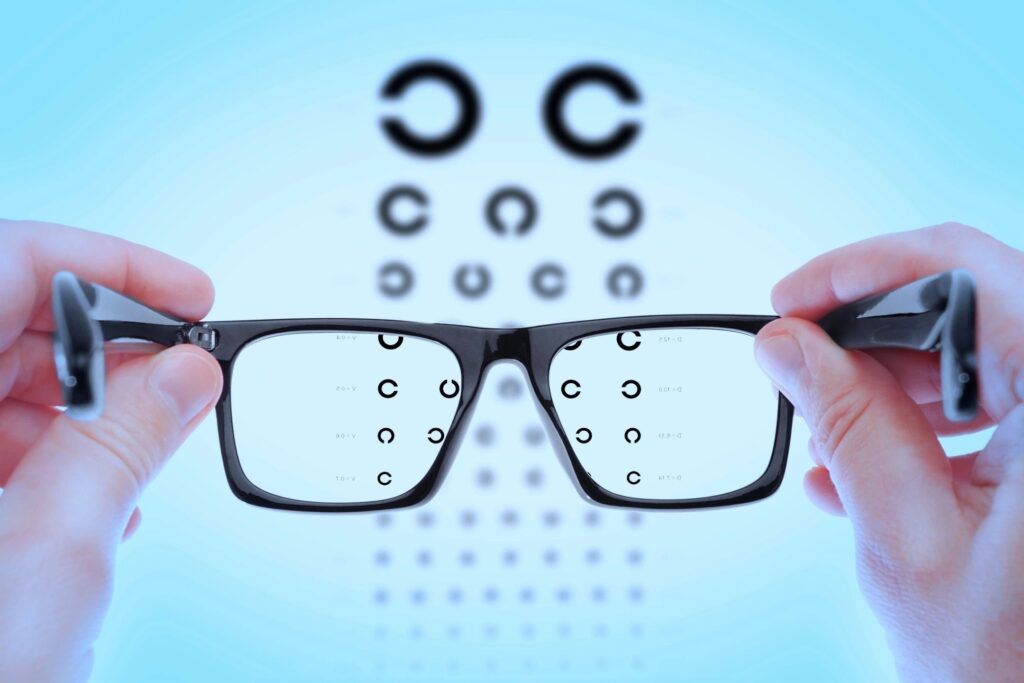
Long before Lens Crafters and contact lenses, ancient humans found ways to adapt to blurry vision. Here’s how the quest for clarity shaped history.
Somewhere near Pisa, Italy, around the year 1286, a nameless but ingenious craftsman assembled two small glass lenses into a frame made of bone or wood. That simple creation became the world’s first known pair of eyeglasses—an invention that would eventually transform lives globally.
Today, over two-thirds of U.S. adults rely on visual aids. But considering that humans have roamed the Earth for thousands of years, you might wonder: How did people with poor vision function before glasses were invented?
Life Before Eyeglasses: Adapting Without Modern Solutions
The historical record doesn’t tell us much about how ancient people coped with nearsightedness or farsightedness. But based on what we know about early societies, vision challenges didn’t necessarily mean being left behind.
In prehistoric times, perfect eyesight wasn’t essential for survival in every role. While hunters might have needed sharp distance vision, others found value in different ways. People with myopia (nearsightedness) may have excelled at detailed tasks, like weaving, carving, or toolmaking—activities that required focused close-up work, not a long-range view.
As civilizations evolved, so did our tools for seeing better.
Ancient Lenses: Clarity in Crystal
Long before eyeglasses appeared, ancient cultures experimented with primitive magnification devices. In the Bronze Age, people in the eastern Mediterranean crafted plano-convex lenses—flat on one side, rounded on the other—using materials like rock crystal and glass.
One famous discovery is the Nimrud lens, unearthed in present-day Iraq in the ruins of an ancient Assyrian palace. This lens, estimated to be over 2,700 years old, could magnify objects up to seven to nine times—enough to assist artisans with intricate work.
Historians like Vincent Ilardi have suggested that some of these early lenses were mounted or rested on surfaces, giving craftsmen the ability to work hands-free. The discovery of finely detailed artifacts, such as a 5,000-year-old Egyptian ivory knife handle covered in microscopic carvings, also points to the use of magnification tools in ancient craftsmanship.
Optical Pioneers in Ancient China
Meanwhile, across the globe, Chinese scholars were making strides in the science of optics. Thinkers like Mozi, a philosopher from the 5th century BCE, and King Liu An’s court explored the behavior of light and vision centuries before Europe’s medieval breakthroughs.
Evidence of this legacy appeared in the tomb of a prince from China’s Eastern Han Dynasty, where archaeologists found a small convex crystal lens. Though just 2.3 grams in weight, the lens suggests a deep understanding of visual magnification dating back to the 1st century CE.
Eyeglasses Emerge—and Change Everything
By the late 13th century, the development of eyeglasses finally provided a widespread and reliable solution for people with poor eyesight. The invention spread quickly across Europe, especially among scholars, monks, and craftsmen.
But the journey to that point was paved by centuries of experimentation, curiosity, and creative problem-solving.
Final Thoughts: Vision, Innovation, and Human Ingenuity
From rock crystals to polished glass, and from ancient workshops to high-tech labs, our desire to see the world more clearly has been a constant throughout human history. While eyeglasses may seem like a modern convenience, their story is deeply woven into the fabric of human innovation.
So the next time you clean your lenses or put on your reading glasses, take a moment to appreciate the thousands of years it took to bring clarity into focus.






More Stories
MY GREATEST ROLE: JOHN NICHOLSON IS BEING PHOENIX’S FATHER
Built Different: OT Tansimore on Raising Daughters, Leading with Purpose, and Leaving a Legacy
Besties to Bae? Brenda & Derek’s Endgame Dilemma